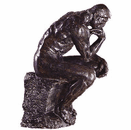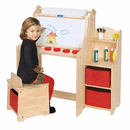Managing Assets and Payroll: Accounting Fundamentals (Enhanced DVD)
Product Description:
For businesses to run smoothly there needs to be a system in place to account for assets and accurately process payroll.
Intangible and Tangible Assets
In this section, the difference between an intangible and tangible asset shows that tangible means physical and intangible means not of a physical nature, yet still having a value to the company. Examples discussed include capital investments, costs that are not related, and the value of patented things to the company.
Accounting for Assets
In this section, the various types of accounts are discussed. Each account tracks certain types of transactions for a specific reason. The most frequently used accounts especially in the accounting processes for a small business include, A/R that stands for account receivables, receivables from notes, insurance that is prepaid, inventory on hand, supplies held for the business, land that is owned, and all the other possible assets that a company has, which are intangible.
Asset Groupings and Depreciation
Assets are categorized based on how quickly that they may be converted into cash. This is called the liquidity of the asset. There is a difference between current assets, like receivables, that are easier to convert to cash and fixed assets, such as furniture, that take more time to convert to cash. In addition, the depreciation of assets is discussed.
Accounting for Payroll
Payroll accounting includes taking care of the documentation required such as W-2 forms and issuing annual 1099-MISC forms where appropriate. It also includes calculation of the required payroll deductions from the gross pay. Gross pay includes wages plus overtime and may include variable benefits. After taking the appropriate deductions, the employees receive their net pay in the form of a paycheck or a direct deposit.
Managing Assets and Payroll: Accounting Fundamentals
Intangible and Tangible Assets
In this section, the difference between an intangible and tangible asset shows that tangible means physical and intangible means not of a physical nature, yet still having a value to the company. Examples discussed include capital investments, costs that are not related, and the value of patented things to the company.
Accounting for Assets
In this section, the various types of accounts are discussed. Each account tracks certain types of transactions for a specific reason. The most frequently used accounts especially in the accounting processes for a small business include, A/R that stands for account receivables, receivables from notes, insurance that is prepaid, inventory on hand, supplies held for the business, land that is owned, and all the other possible assets that a company has, which are intangible.
Asset Groupings and Depreciation
Assets are categorized based on how quickly that they may be converted into cash. This is called the liquidity of the asset. There is a difference between current assets, like receivables, that are easier to convert to cash and fixed assets, such as furniture, that take more time to convert to cash. In addition, the depreciation of assets is discussed.
Accounting for Payroll
Payroll accounting includes taking care of the documentation required such as W-2 forms and issuing annual 1099-MISC forms where appropriate. It also includes calculation of the required payroll deductions from the gross pay. Gross pay includes wages plus overtime and may include variable benefits. After taking the appropriate deductions, the employees receive their net pay in the form of a paycheck or a direct deposit.
Managing Assets and Payroll: Accounting Fundamentals
- Enhanced DVD
- ISBN: 978-0-81608-979-6
- Run Time: 30 Minutes
- Copyright Date: 2014
- CC
Customer Reviews
Copyright © 2002-2025 Madison Art Shop™ LLC. All Rights Reserved.

















